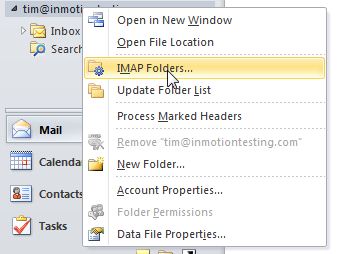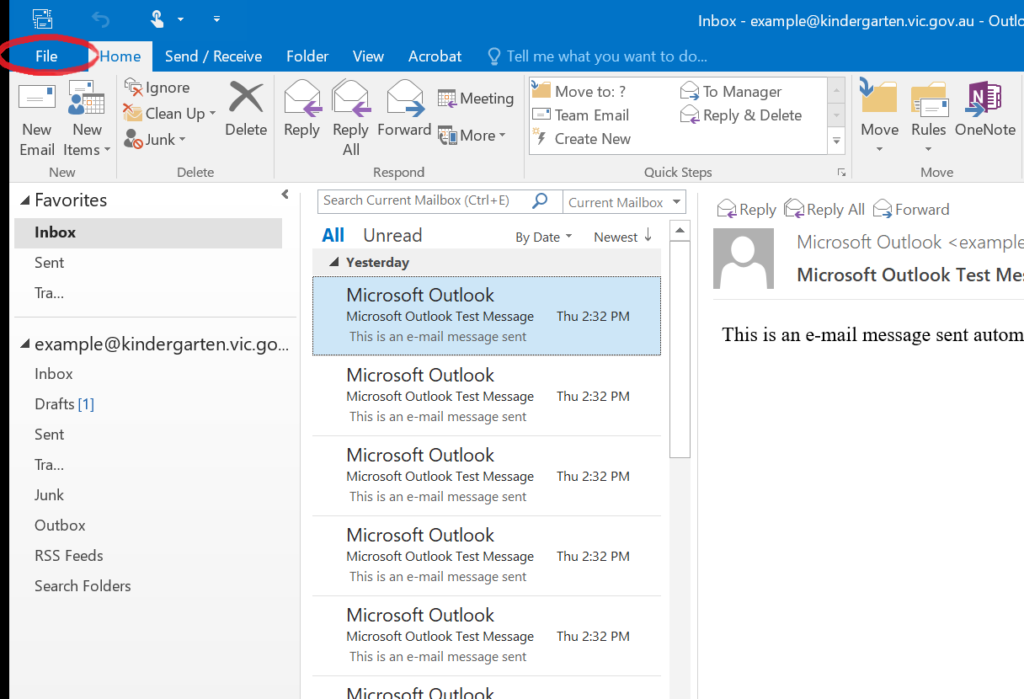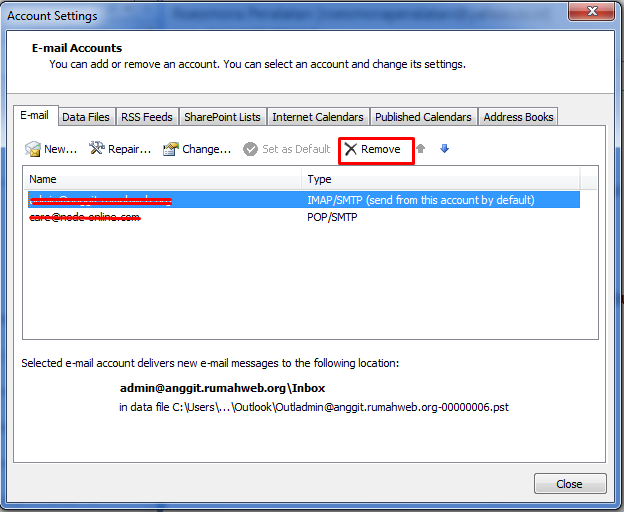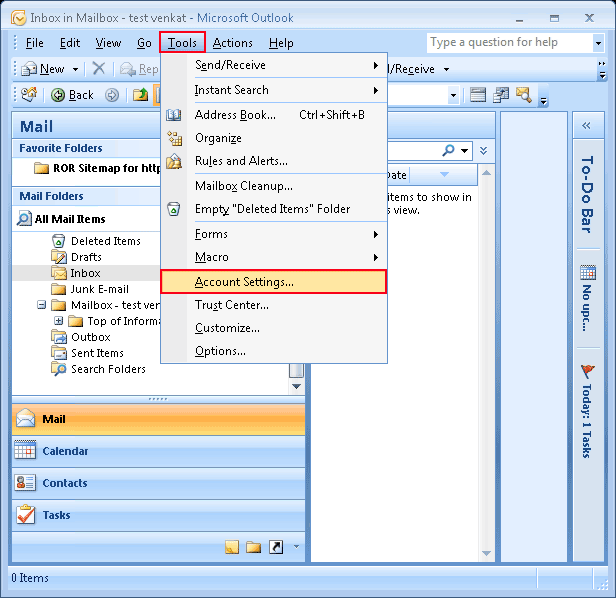
- Outlook personal folders imap update#
- Outlook personal folders imap full#
- Outlook personal folders imap download#
attachments, so I can forward it, reply etc). When the link works properly, after double click on the item, a window of Outlook's message is opening (then I see original message incl. The problem that I see is linking of items seen in history of BCM's clients (e-mail's titles) with messages stored in PST files. Diane, You have written: "You cannot reuse an IMAP data file with a different profile." I am going to move on my Outlook's data to a new computer, including Business Contact Manager's data.

Close the dialogs and you are ready to restart outlook.ĭear Ms.Now you'll get the 'can't find' error and can tell outlook where to find it.Switch to the Data Files window and double click on the account's data file.Do not rename the file Outlook creates a new file in the default location if you try to rename it - you can only move it. Select the IMAP acct and click Open Folder to open the folder containing the PST.Open the profile ( Control panel, search for Mail) and click on Data files.With Outlook 2013 and newer, set the ForcePSTPath registry key then remove and re-add the account to Outlook.įirst, close Outlook then make sure Outlook is not listed in Task Manager, Processes tab a few minutes after you close it. Note that this method works to move and reuse an IMAP data file in older versions of Outlook but is not recommended with Outlook 2010 and newer. Outlook 2013/2016's IMAP *.ost file can't be reused (and will be automatically deleted when you delete the account from a profile).
Outlook personal folders imap full#
While this may suffice as a backup of the mailbox or an archive, if you need to clean out the IMAP account, we recommend moving messages to a local pst file to insure the full message bodies are downloaded.
Outlook personal folders imap download#
Note: If you download full messages, you can open and view the contents of the Outlook 2010 and older IMAP *.pst file in another Outlook profile.

Using it in a new profile would not make the process faster as Outlook would re-sync every thing in the data file. Only the profile that created the IMAP data file can use it. We receive a lot of questions from people who want to reuse the IMAP data file, either on a new computer or with a new profile.
Outlook personal folders imap update#
Then you need to double click on the reg file to update the registry! reg extension (or change the extension to reg after saving). Remember: you need to edit the path name, the save it using the. Outlook 2016 Outlook 2013 Outlook 2010 Outlook 2007 "ForcePSTPath"="C:\\folder\\folder\\folder\\folder\\folder" (Use single slashes if you edit the registry directly.) Remember to use double \\ between folder names in the path in the reg file. If it does not exist, Outlook will drop back to the default Microsoft\Outlook location under the user account (and in Outlook 2010 and up, to My Documents\Outlook files for POP3 and additional pst files.) If you don't want to edit the registry directly, you can use one of these text files - you need to edit the path before changing the file extension to reg and double clicking on it to run it.īe sure the path exists before adding the key to the registry. Existing data files would need to be moved. Newly created data files will default to the location. If Outlook is open, close it then restart. String Value: ForcePSTPath with your desired data path as the value dataĬlick OK and edit the registry editor. Right click on the key and choose New then click String Value. HKEY_CURRENT_USER\Software\Microsoft\Office\12.0\Outlook In Outlook 2007 (POP3, Sharepoint, and default pst files only): Use the ForcePSTPath regedit to change the default *.pst path and in Outlook 2013 and newer, the IMAP *.ost path. Using ForcePSTPath | Reusing an IMAP data file | Move the PST ost files Microsoft Exchange data files can be relocated using the ForceOSTPath key. This key works for for POP3, IMAP, and SharePoint data files but does not affect Microsoft Exchange (including ). ost files will be placed in the path entered in the registry.

If you create new accounts in your profile (or create a new profile). This change will not move existing pst files in your profile. Outlook 2007 and up use the ForcePSTPath registry key to change the default data file path from C:\Users\username\AppData\Local\Microsoft\Outlook. Symbolic Links and Junction Points can be used.

I tested the ForcePSTPath with IMAP accounts in Outlook 2010, without error. Or use the ForcePSTPath key then add the account to your profile after creating the key. In Outlook 2010, make sure you select the sent folder in More Settings. Some Outlook users report problems sending and receiving email.


 0 kommentar(er)
0 kommentar(er)
